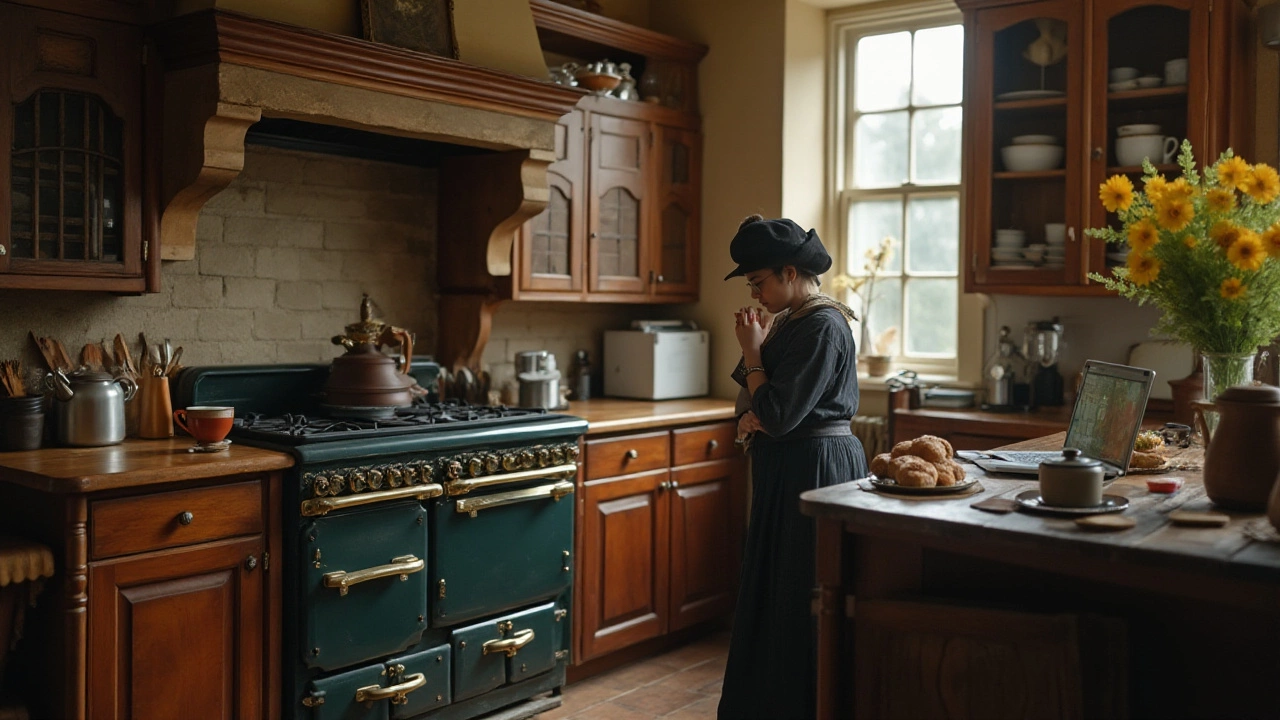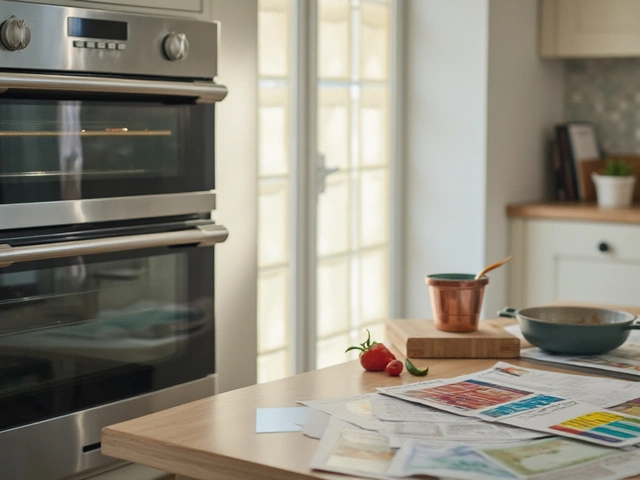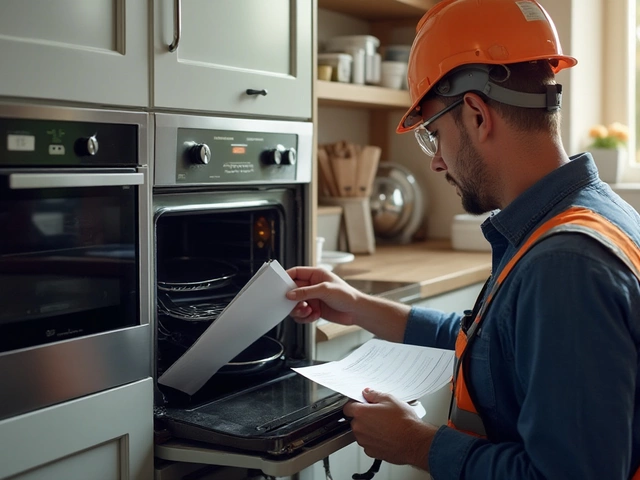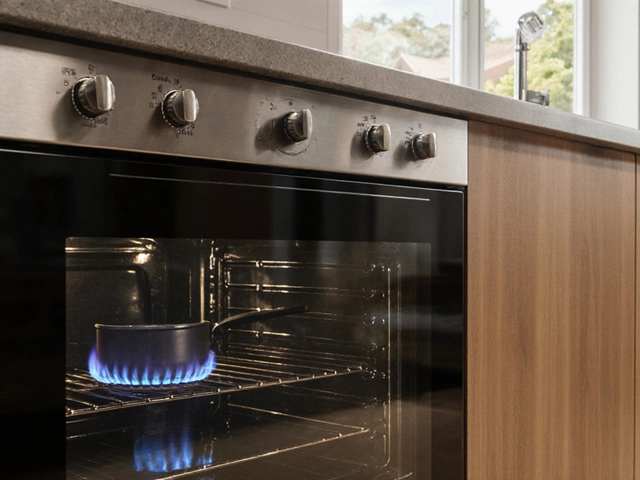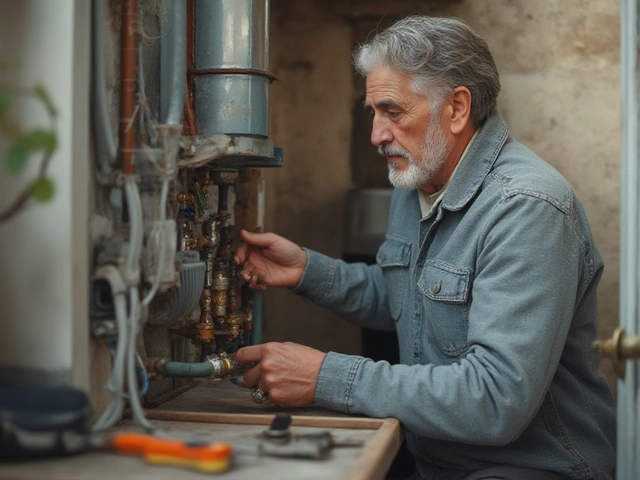We all know appliances aren't made to last forever, but when it comes to a trusty old stove, deciding its fate can be tough. Ten years can be a lifetime for kitchen equipment, and as issues arise, it’s crucial to weigh whether repairs are worth it. The costs of replacing old parts, the charm of longstanding reliability, and the allure of newer, more efficient models all play their part in this decision.
Given that our stoves are at the heart of many household activities, this deliberation goes beyond mere function—it reaches into the realm of comfort and familiarity. By considering factors like repair costs, energy use, and the availability of parts, you can make a practical choice without straying too far from that indispensable warmth of a home-cooked meal.
- Evaluating the Condition of a 10-Year-Old Stove
- Cost Analysis: Repair vs. Replacement
- Availability of Spare Parts
- Energy Efficiency and Technology Advancements
- Tips for Extending Stove Life
Evaluating the Condition of a 10-Year-Old Stove
When it comes to determining the health of a 10-year-old stove, it's a bit like going to the doctor for a check-up. You’ve got to open the hood, metaphorically speaking, and have a look at what's going on inside. One of the first things to examine is the heating element since it’s the heart of any electric oven. Over time, these elements can degrade, leading to uneven heating or just downright refusal to get hot enough. A telltale sign that your stove might need some tender loving care is if it takes longer than usual to heat up or doesn’t get to the temperature it used to hit easily.
Next up is the control panel, which is akin to the brain of your appliance. If you've noticed that your oven's settings are off or the timer isn't working correctly, it’s time to consider if this is due to age. Digital displays tend to dim or fade over the years, making it tough to cook those treasured family recipes to perfection. Now, take a peek inside at the oven’s interior and racks; rust and significant wear can be signs of internal problems that may not be worth repairing. Keep an eye out for unusual smells or sounds during operation—these could be indicators of underlying issues, possibly presenting fire hazards.
You'll also want to cast an evaluating eye on your stove's exterior and seals. Wear and tear on knobs and handles is typical, but if they’re hanging on by a thread (or duct tape), replacement could be on the horizon. In addition, oven door seals play a critical role in keeping heat where it belongs: inside. Faulty seals can lead to increased energy use and uneven cooking results, which no one wants when baking that holiday ham! It's also wise to give a glance to burners and ignitors, especially if they exhibit issues like the classic won’t-ignite-or-stay-lit conundrum.
It's interesting to note the perspective of experts; homeowners often grapple with such dilemmas.
Michael Waters, an appliance repair specialist quoted in Home Repair Magazine, remarked, "Sometimes the best fix isn't a fix at all, but a well-timed replacement. Yet, an older appliance still hanging in there might surprise you with some affordable tweaks." This underscores the importance of assessing what your stove means to you in terms of reliability and function. An older stove that has seen you through countless family meals holds a value no spreadsheet can calculate.Evaluating the condition of an old stove isn't just about what you can see on the surface. Checking under the hood, so to speak, can help you decide whether to invest in more years of service or start fresh. If your stove has already needed significant repairs in the past two to three years, it might be heralding its farewell tour. Keep in mind that repair costs can swiftly accumulate, sometimes nearing what you might spend on a modern, more efficient model that could save energy and money in the long run.
Cost Analysis: Repair vs. Replacement
Deciding whether to repair or replace a electric oven that has been serving your culinary needs for a decade isn't just about crunching numbers—it's about understanding the broader impact on your household budget and lifestyle. Initially, it's tempting to look at the lower immediate cost of repairs. Fixing a broken heating element or a dodgy door hinge can seem more economical than splashing out on a new model. However, it's vital to consider the frequency and severity of the problems that arise as these appliances age. Frequent small fixes can add up, both in terms of cash and the time spent waiting for a technician.
A new stove repair can bring significant improvements in energy efficiency, which directly impacts your electricity bills. Modern ovens often boast improved insulation and advanced cooking technologies, which translates into lower long-term operating costs. While new units can have a high upfront cost, the savings made on utility bills and reduced repairs can outweigh this initial outlay over time. Moreover, new stoves come with warranties which can be a significant relief for those worried about recurring problems with older models.
"In our experience, the tipping point tends to be around when the repair costs exceed half of the replacement cost," says Max Tech, a US energy efficiency specialist. This rule of thumb helps homeowners evaluate whether they are investing too much in aging technology that might not offer the benefits of newer models.When thinking about replacement, consider how long you plan to stay in your current home. If you're planning a renovation in the near future, or expect your living situation to change significantly, investing in a more modern appliance maintenance might align better with future plans. It might even make your home more attractive should you decide to sell.
Several cost calculators and tools available online can give you detailed insights into these long-term vs. short-term costs, taking into account everything from energy use to potential repair needs. By weighing these factors, you'll be better equipped to make a choice that suits your personal and financial situation.
Finally, one cannot underestimate the sentimental value of a well-loved kitchen companion. If you’ve cooked countless family dinners and shared many celebrations with your current stove, that connection could tip the balance in favor of appliance maintenance. Just be sure this doesn’t put an undue strain on your finances or compromise the safety of your kitchen.
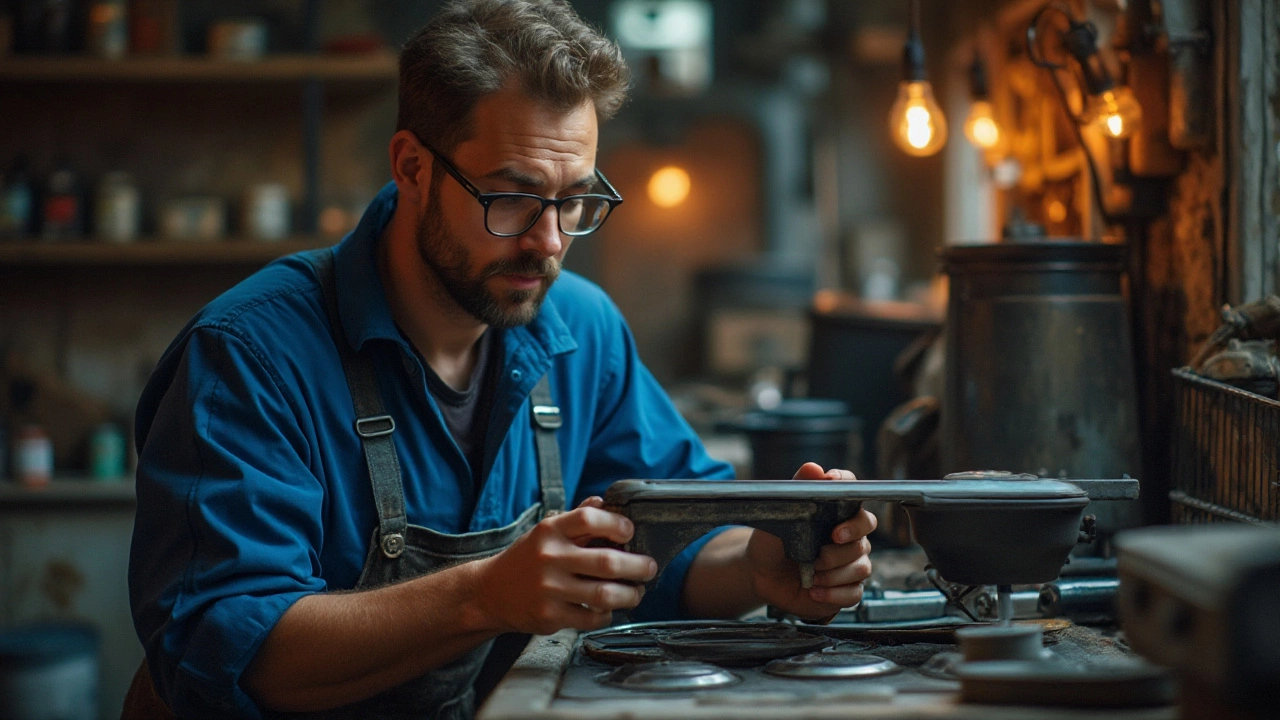
Availability of Spare Parts
Finding spare parts for a decade-old stove can be an adventure of its own. As appliances age, the supply of specific components often dwindles, creating a challenge for both homeowners and repair professionals. When considering repair, it's essential to address whether the parts needed for your stove are readily accessible or custom-ordered. This detail might significantly influence your decision to repair or replace.
For common brands, parts are often available through authorized dealers or online marketplaces. However, rare or discontinued models might pose a more significant challenge. Delving into the intricacies of supply chains and the availability of these parts reveals a spectrum where some components are abundantly stocked, while others become elusive as time passes. A well-informed repair technician can often source parts creatively, sometimes turning to older appliances for salvaged components. But this method doesn’t always guarantee the longevity or quality of the resolution.
In Australia, many repair shops still maintain a robust inventory of parts for older models, thanks to a bustling market for second-hand goods and a homegrown culture of repair and reuse. This ensures that certain key components, like knobs, heating elements, and electronic controls, might be easier to find. However, the practicality of acquiring rare electronics can turn into a needle-in-haystack scenario. A report from the Australian Appliance Repair Network stresses,
"The odds of finding compatible parts diminish each year, making proactive maintenance ever more crucial."If you have a bespoke or non-standard model, the journey might lead you to international suppliers, which often results in higher costs and longer waiting times due to import processes. It's crucial to discuss availability with a trusted technician before committing to a repair. They may provide insights into whether your beloved antique merely needs a tune-up or is becoming impractical to maintain. A peek into global supply trends would show an evident demand pattern where certain parts skyrocket in scarcity, eventually aligning with the shifts in appliance popularity and technological advancements.
Emphasizing on longevity and innovation, some manufacturers keep comprehensive archives that help track down rare parts even years after their models are phased out. Contacting the manufacturer directly might sometimes reveal hidden reserves, effectively bypassing typical supply chain limitations. Meanwhile, modern digital platforms are uniquely positioned to offer solutions through user-led communities sharing compatible parts and solutions.
Depending on what’s needed, balance these considerations against the potential benefits of up-and-coming technology. Newer models of stoves and electric ovens may work more efficiently and come with a fresh warranty. Yet, the familiarity and dependability of your current stove can be a compelling reason to invest effort into sourcing spare parts. After all, whether you decide on repair or replacement, the heart of any home cooks up extraordinary memories, not just meals.
Energy Efficiency and Technology Advancements
In recent years, the landscape of household appliances has transformed dramatically, especially with the strides in technology that focus on conserving energy. When considering a repair for your decade-old stove, it's essential to think about how energy-efficient newer models have become. Today’s electric ovens are built with an array of features aimed at reducing power consumption and enhancing performance. This drive towards efficiency not only means savings on your energy bills but also contributes to a more sustainable way of living. Newer models often come with insulation improvements, advanced controls for precise cooking, and faster heating elements that minimize energy wastage.
Compared to some older stoves, modern electric ovens often include features like convection cooking, which circulates hot air to cook food more evenly, potentially reducing cooking times and energy use. The stoves from a decade ago may not have these efficient cooking capabilities, meaning they could be costing more in electricity over time. With energy efficiency being a concern for many households, an upgrade could be seen as a way to cut costs in the long run, even though it's a more significant initial investment.
According to the U.S. Department of Energy, modern efficient stoves and ovens can use up to 20% less energy than older models, making them not only cost-effective but also environmentally friendly.Additionally, technological advancements have led to more than just energy savings. The advent of smart technology in kitchen appliances means that homeowners can now enjoy the convenience of smart ovens that connect to their home Wi-Fi networks. These devices offer features such as remote preheating and cooking status updates through apps on your phone, which can be a game-changer for the busy household. While the allure of a modern, smart appliance is tempting, consider whether these advancements are essential for your cooking routine or just a neat addition to your kitchen’s capabilities.
If you love the idea of a tech-savvy kitchen, know that the investment in a newer stove might well be worth it. However, for those who cherish the charm of an older, albeit less efficient appliance, a repair could bridge the gap until you're ready to make a more significant upgrade. With rapid technology changes, even the most advanced stove today could be outdated within a few years. It's a delicate balance between efficiency, function, and staying current with technological progress, making it a choice that requires weighing personal values and household needs.

Tips for Extending Stove Life
Keeping your electric stove in tip-top shape is an art and a science. With the right care and attention, your ten-year-old stove can function as well as it did the day it was first installed. One of the most straightforward methods to extend the life of your stove is consistent cleaning. The accumulation of food and grease not only affects performance but can lead to safety hazards like fires. Make it a habit to clean the stove top and control knobs after each use, preventing buildup before it becomes problematic. Different parts may require different cleaning materials; for example, using a non-abrasive sponge can avoid scratches on delicate surfaces, preserving the aesthetic and functional integrity of your appliance.
Another pivotal aspect is timely maintenance. Regularly checking electrical connections and wiring can prevent unexpected malfunctions. This might seem daunting, but it's as systematic as examining visible wirings and making sure connections remain snug. Paying attention to the smallest anomalies, such as flickering lights or inconsistent heating, can provide clues to potential issues. Keeping the manuals or schematics close by can allow for quick troubleshooting. Often, these documents give intuitive solutions to everyday problems without needing professional intervention, saving money and time.
The use of your stove also dictates its longevity. Avoiding the temptation to consistently run your stove at its highest setting can protect the heating elements from premature wear. Instead, experiment with cooking temperatures and timing, giving preference to slower, more energy-efficient methods whenever possible. Did you know that keeping the oven door closed while cooking can conserve up to 20% of energy? Each time the door is opened, the internal temperature drops drastically, requiring more energy to balance it out. It's the little things that add up.
"An ounce of prevention is worth a pound of cure." - Benjamin Franklin, a mantra as relevant in appliance care as it was when it was first mentioned.Setting aside time for a thorough inspection every few months can also uncover problems not readily visible. The inside of a stove is much like an orchestral symphony; each part relying on another for beautiful harmony. Examining the burner's alignment, assessing coil integrity, and inspecting seals for wear and tear can allow you to catch potential issues early. This isn’t just about avoiding fixes and replacements; it’s about understanding your stove’s own personality, like how some burners might heat quicker than others.
Efficiency matters, and as your electric stove ages, so does the importance of monitoring your energy use. Keeping track of energy consumption can reveal inefficiencies not immediately visible. Consider investing in an energy monitor that connects to your mains serving your kitchen. These devices provide readings that can help you identify if your appliance is drawing more power than it should.
Lastly, don’t underestimate the power of professional servicing. Inviting a qualified technician to examine your appliance annually can prevent magnified problems down the line. Specialists bring insights gathered from years of experience and, more importantly, unveil any hidden gremlins hiding within your trusty stove. Regular check-ups can uncover escalating problems, allowing you to address them promptly without the hefty bills associated with emergency repairs.

